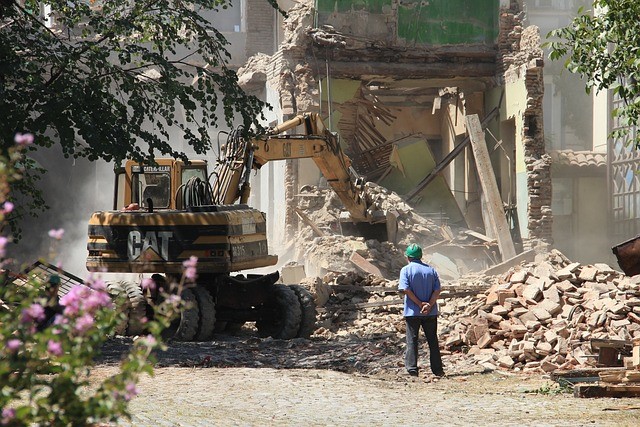Home Demolition vs Professional Tear Down
Many DIY enthusiasts get great gratification from knocking a hole in the drywall as a first step to household demolition. While the process can be satisfying, it also requires extensive planning and preparation before taking that first step.
The reasons for demolition can vary from a failed foundation, burst pipes or storms creating water damage, a homeowner with a desire to knock down and rebuild, and other factors. In any circumstance, distinct steps must be followed to ensure the safest and most seamless process.
Ideally, to ensure safety, homeowners will enlist the services of a trusted, reputable demolition contractor such as JRP Demolition in Dallas. Professionals know the local regulations and offer the skills and expertise along with the appropriate tools and equipment for a proper teardown.
10 Steps to Follow Before Home Demolition
Some Dallas homeowners don’t have a choice regarding home demolition. If the foundations fails or water damage is severe from storms or burst pipes, starting from scratch could be the only answer.
When this is the situation, the owner needs to prioritize planning and preparing for the demolition by first contacting a qualified, reliable demolition contractor with knowledge and expertise in everything that encompasses demolition, including the local regulations.
The professional crew will work safely first and foremost, ensuring a secure, smooth process. Find steps for preparing for a building demolition by visiting https://vinedisposal.com/how-to-prepare-for-a-building-demolition-1.html. Then follow these steps as you plan your house demolition.
The demolition method
The approach for demolishing the house will be a primary decision whether you choose mechanical demolition or deconstruction. Deconstruction involves working by hand, focusing on salvaging materials for repurposing the materials.
It is a labor and time-intensive choice since each piece of the rubble will be sorted.
The most common option is mechanical demolition where contractors incorporate heavy equipment to do the tear down. Minimal sifting is required with this method making it less involved and lower in cost.
Some people will salvage as many of the materials as they can before the home is taken down and then use mechanical demolition.
The demolition contractor
Household teardown is a massive undertaking that should not be handled in a DIY capacity. Once the method is decided, comparing demolition contractors will be a critical step. The most reputable professional will assess the site and offer a quote along with how they plan to approach the teardown.
When reviewing the options, consider credentials including license and insurance, years in the industry, reputation, previous projects compared to yours, references, testimonials, and reviews.
The contractor will be undertaking considerable responsibility. It’s in your best interest to ensure the selected individual can work safely without potential hazards or injuries.
A contract that each of you agree to should be put in writing to document the terms.
The permits
The local building administrators must approve the demolition before heavy machinery can be brought onto the property. These authorities will provide building permits. The local government website lists the rules and regulations for contractor consultation and teardown.
Local contractors will be aware of the ins and outs of the process before proceeding. Each location has specific stipulations, including noise considerations and offering notice for this. If you need to remove a tree to accomplish the demolition, this will also require a permit.
The administrators expect a distinct plan when applying for permits. The process can take roughly three weeks from start to approval. Go here for things to consider before demolishing your house.
The home inspection
Local government offices insist that houses undergo thorough inspections before the permits are approved. This is because older houses may contain hazardous materials like lead paint, asbestos, mold, and rotted wood.
With a home inspection, the contractor is assured of knowing what the property involves, so they’re adequately prepared. For instance, if asbestos is found, the professional must take additional precautions, dispose of it, and keep records following EPA guidelines.
Depending on your location, you could have local, state, and federal government regulations to meet. Some states will only permit credentialed contractors with accreditation in asbestos removal to perform the work.
Primary utility service disconnection
For safety purposes, all service providers should be notified to disconnect utilities for electricity, gas, sewage, and water in the interim. This ensures the safety of the contracting company and the neighborhood while the teardown occurs.
In some regions, the building administrators or fire departments must check to ensure utilities are removed before demolition proceeds.
Sometimes service request processing can be delayed a few weeks. It’s wise to contact the service providers a few weeks before the projected teardown and advise them of the proposed cutoff date.
Final Thought
When tearing down your Dallas home, a primary step is to pack everything up with the daily essentials readily available and the rest in storage.
You’ll need to plan and prepare for a safe, comfortable place for your family including your fur babies to go temporarily; however long you’ll need to get back into your home.

